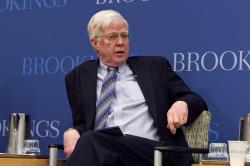Abstract
This paper examines the debate over the proper valuation of the Chinese Renminbi (RMB). After reviewing the historical trends in the exchange rate and foreign trade, the paper assesses the appropriate level of the exchange rate from the perspectives of : (1) purchasing power parity, (2) macroeconomic balance, and (3) the accumulation of reserves in a fixed exchange rate regime. I conclude that the RMB is undervalued on a PPP basis, but that the PPP standard provides very weak guidance as to the appropriate exchange rate for low-income economies. On the other hand, the consideration of macroeconomic balance suggests little or no undervaluation. China is notable for the extremely high levels of national saving. As long as that characteristic holds true, there is little basis for suggesting that it could or should have a current account deficit; and, contrary to common perceptions, China does not have a large current account surplus.
Instead, China’s problem is an excess of foreign capital inflows that is the result of a very large volume of foreign direct investment. More than a currency appreciation, it needs to find a way to redirect those financial flows back into international markets without discouraging the involvement of foreign firms. China cannot absorb the foreign capital on top its own domestic saving. In the past, it has offset the inflows by permitting substantial holdings of onshore foreign exchange accounts and tolerating a large unrecorded outflow (errors and omissions) in the balance of payments. However, recent expectations of a possible revaluation of the RMB have led to a flight from the foreign exchange accounts and a reversal on the normal unrecorded outflow. The result of the speculation has been the surrender of large amounts of foreign exchange to the central bank. The paper examines several options for managing the inflows.
Continued pressures to revalue the RMB run the risk of disrupting the internal balance of saving and investment and pushing China on to a path of slower economic growth.
The Brookings Institution is committed to quality, independence, and impact.
We are supported by a diverse array of funders. In line with our values and policies, each Brookings publication represents the sole views of its author(s).



